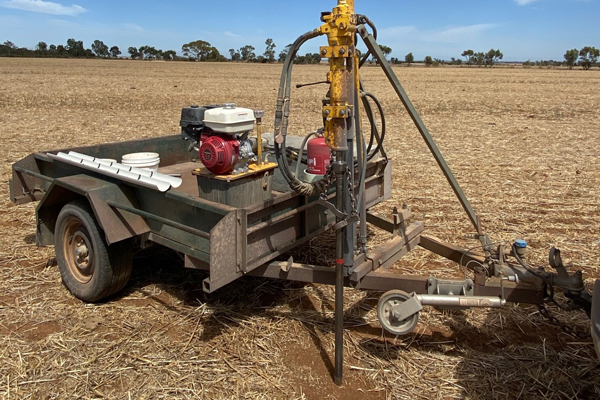Mick Heyneman, Agronomy Consultant

Soil testing is a key tool for making informed fertiliser and soil management decisions. It helps fine-tune inputs, ensuring the right nutrients are supplied to support crop and pasture growth while avoiding unnecessary costs. By understanding the nutrient levels, structure and pH of your soil, you can boost the growth of crops and pastures, maintain soil health and, ultimately, optimise gross margins.
Phosphorus is essential for crop establishment, aiding root development and increasing yields. However, not all phosphorus in the soil is readily available to plants. To gauge what's accessible, we look at two indicators: Colwell P, which measures the phosphorus that plants can use, and the Phosphorus Buffering Index (PBI), which indicates how tightly your soil holds onto its phosphorus. A high PBI means your soil grips phosphorus tightly, requiring more fertiliser for your plants to access it. Equally, a low PBI suggests plants more easily access phosphorus, but it could also leach away quickly.
For example, two paddocks might have the same Colwell P levels, but if one has a high PBI, plants will struggle without additional P supplied. Knowing both values allows you to manage phosphorus smartly, balancing costs with crop production.
Around 10 years ago, a new generation phosphorus test, known as DGT-P (Diffuse Gradients in Thin Films) was introduced. This test provides an even better indication of available phosphorus in the soil and is especially useful in soils with high phosphorus tie-up. By using DGT testing alongside Colwell P and PBI, you can make more informed and accurate assessments as to the phosphorus responsiveness of your soils, and tailor phosphorus applications to the specific needs of your crops and soil types.
Variable Rate Technology (VRT) is another tool that can optimise your fertiliser usage. By using soil test results to create detailed maps, you can adjust phosphorus application based on specific conditions, like soil type and expected yields within different parts of your field. This targeted approach helps increase productivity, where phosphorus levels are low or tightly bound (high PBI), and reduces costs where phosphorus is abundant.
In addition to soil testing for phosphorus, equally important to your bottom line is deep nitrogen (N) testing. This involves sampling soils to 60cm using a hydraulic coring rig and testing them to measure the amount of nitrogen in the soil profile.
Given that 2024 saw pulse crops with low biomass, we would anticipate these crops may have fixed less nitrogen than normal, and crops grown on these paddocks may require more top-dressed nitrogen fertiliser to achieve target yields.
Conversely, many cereal and canola crops were over-fertilised, given that grain yields were limited by the exceptionally dry growing season. This could mean there is more leftover nitrogen to support yields of subsequent crops and, as a result, have a lower requirement for nitrogen fertiliser. Either way, it will be crucial to test for deep nitrogen to make more informed fertiliser top-dressing decisions to optimise gross margins.
Remember, soil pH and structure also play significant roles in soil fertility. Applying lime can correct soil acidity, which may hinder the availability of a range of nutrients and plant growth. Keeping your soil’s pH between 5.5 and 7.0 (CaCl2) is ideal for nutrient uptake and for optimal performance of a range of crops. Additionally, gypsum improves soil structure, particularly in sodic soils, enhancing water infiltration and root development without altering pH levels.
With fluctuating input costs, making informed decisions through soil testing has never been more important. It ensures that every dollar spent on your soil is an investment towards optimising fertiliser use, enhancing efficiency, and profitability.
Talk with a Pinion Advisory Agronomy consultant for more information on soil testing and interpretation of results. Call 1300 746 466 today.
References
GRDC (2022) An informed approach to phosphorus management in 2022